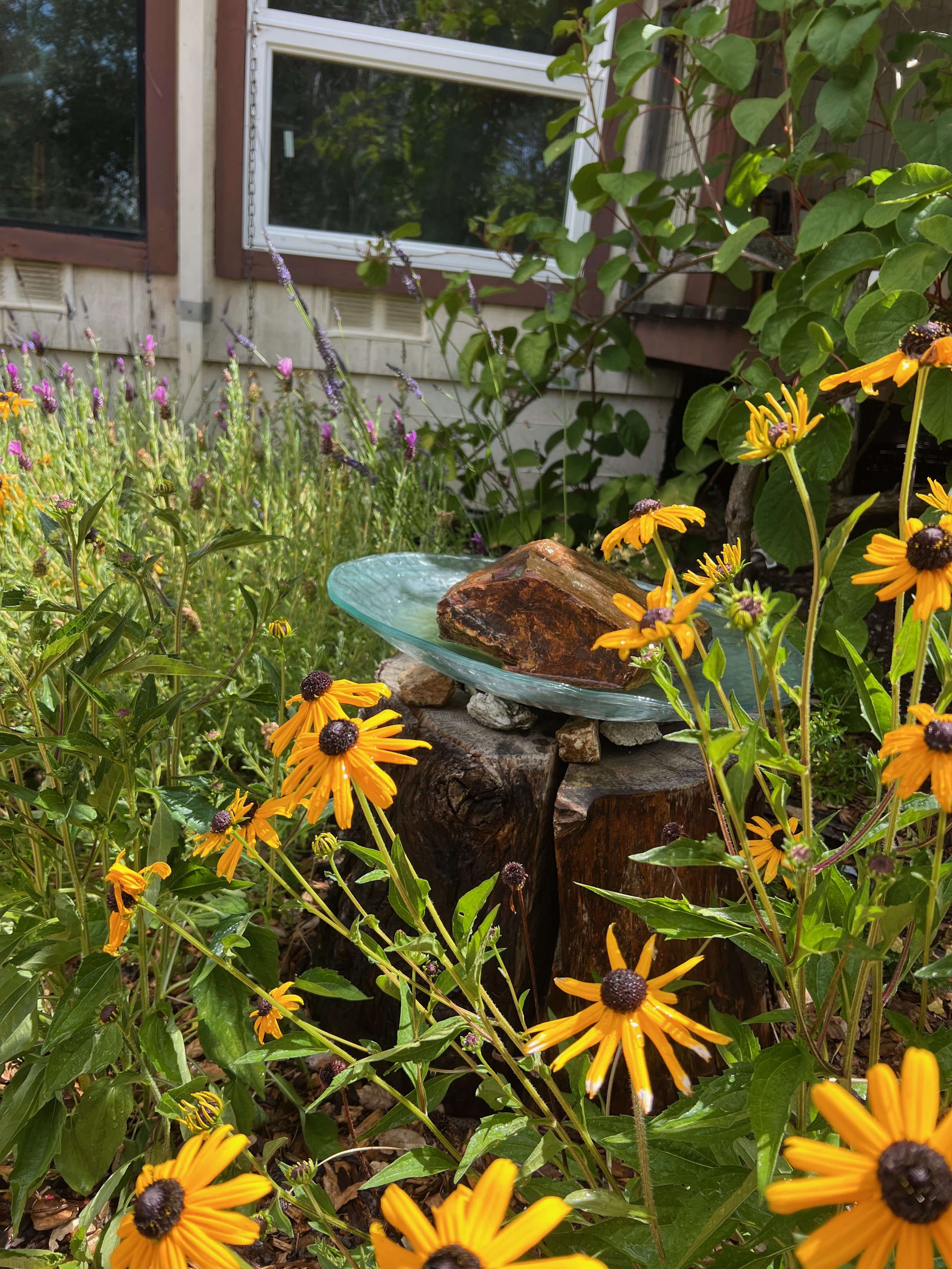I don’t think there is anyone who hasn’t experienced an extreme heatwave this past month. Rin, who is spending the summer in Savannah, experienced their first East Coast heatwave (with accompanying high humidity) a couple of weeks ago. Here in the West, we too have had our share of extreme heat, though not the humid kind. Our backyard weather station hit 116 degrees several times this week, and I instantly start sweating the moment I walk outside.
I have discovered recently that I am a ‘sweater.’ I don’t mean that I’m always sweating; but yes, when the circumstances are right, I will sweat more than the average person. I learned this because Tom and I have joined a local gym. The reason for joining began with injury recovery, but quickly morphed into something else - another tool to build our resilience. We are planning a month-long walking trip next summer for our 25th anniversary, so we are both working hard to build muscle, improve balance, regain agility, and increase flexibility. We’ve added all kinds of different exercises to our daily routine; simply hiking up a hill is not going to prepare us for hiking 16 miles a day for weeks on end.
So now we are in training. And man, when I train, I sweat. I mean not just in the usual places. When I’m done with, say, a spin class, my calves are slicked with sweat. And after a TRX class, my forearms are dripping. I suppose it could be embarrassing, but I don’t look at it that way - I consider it a sign of a healthy vascular system that is performing one of the jobs it has uniquely evolved to do.
Sweat is a beautiful human adaptation. Chimpanzees and macaques have sweat glands, but humans have 10 times the amount that they do and are the sweatiest among the great apes. Scientists have discovered that “the higher density of sweat glands in humans is due, to a great extent, to accumulated changes in a regulatory region of DNA that drives the expression of a sweat-gland-building gene.” This happened through repeated mutations and contributed to an evolution of higher sweat gland density in humans. We are meant to sweat! It’s our primary way of cooling ourselves. As the water in sweat evaporates, the surface of our skin cools. This is true of any evaporative cooling. A liquid will remove latent heat from a surface, and that evaporating liquid will cool the air around it.
Since most animals do not sweat, they have to cool themselves in other ways, and sometimes they too use evaporative cooling. During this heat wave, we’ve been closely watching the behavior of our backyard bees on our water fountain.
Bees use water to cool their hive. Some worker bees are tasked with finding, collecting, and bringing water back; it is spread in a thin surface over the surface of the comb and the bees then fan their wings to evaporate it. A hive may use a quart of water a day in the hot months for this purpose.
Honeybees are not the only ones who do this. Some wasp colonies (many wasps are social insects and, like honeybees, live in large groups) use water the same way. They collect it and spread it on the surface of their nests. Today, while filling the one of the water bowls at the school garden, I watched both paper wasps and yellow jackets collecting water from the edges.
This is one of the most important ways we can help insects; we can place shallow bowls of water around our gardens and yards. Put a rock in the bowl, or several rocks, so that the insects don’t drown (they have poor depth perception). If mosquitos are a worry, change the water daily or weekly (it’s good to do this anyway to keep the water clean). Birds will love this, too.
Many insects will also get water from the soil in your garden, so it’s nice to have a bare space which you keep wet for this purpose. Butterflies especially adore a muddy spot.
Another creature in our garden that appreciates evaporative cooling is the chickens. Chickens, like dogs, pant when it’s hot, and this past week they’ve been panting from dawn until full dark. I actually spray them with water, and though they seem to dislike me doing that, they really love when the ground in their run is wet. So when the temperature is over 100, I go out several times a day and spray them, and the dirt in the run, thoroughly. Immediately afterward, the chickens will congregate in the wet place, and they really perk up.
Chickens also dig holes in the dirt to find the cooler place under the surface. Many creatures do this, too. While dogs and coyotes pant, owls use something called ‘gular fluttering’ which is flapping the loose skin under the throat to move air over the throat cavity. Vultures urinate on their legs to keep cool, another form of evaporative cooling!
That last fact makes me appreciate anew the way we humans use sweat to keep ourselves from overheating.
Stay cool, everybody.
































